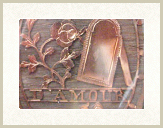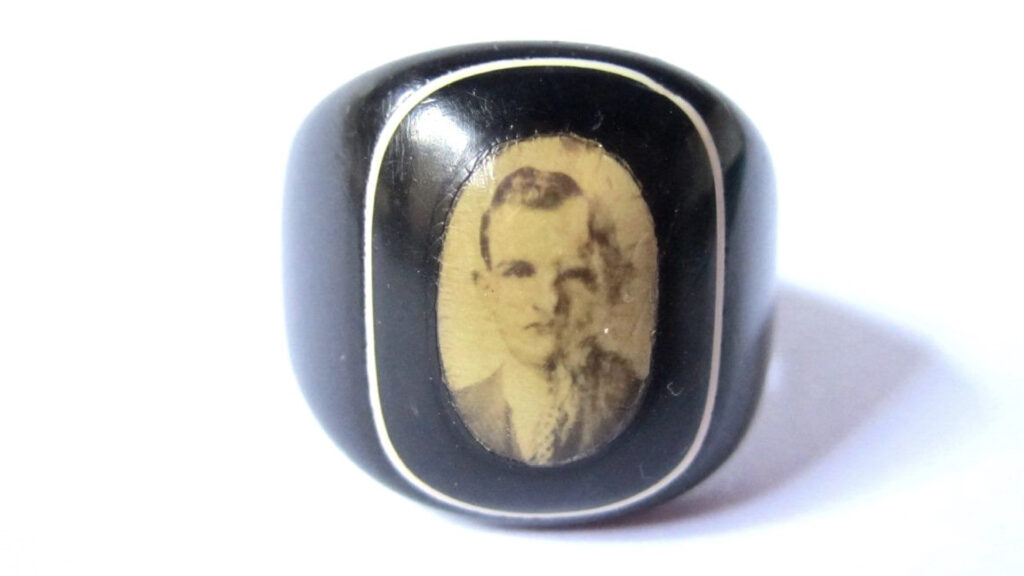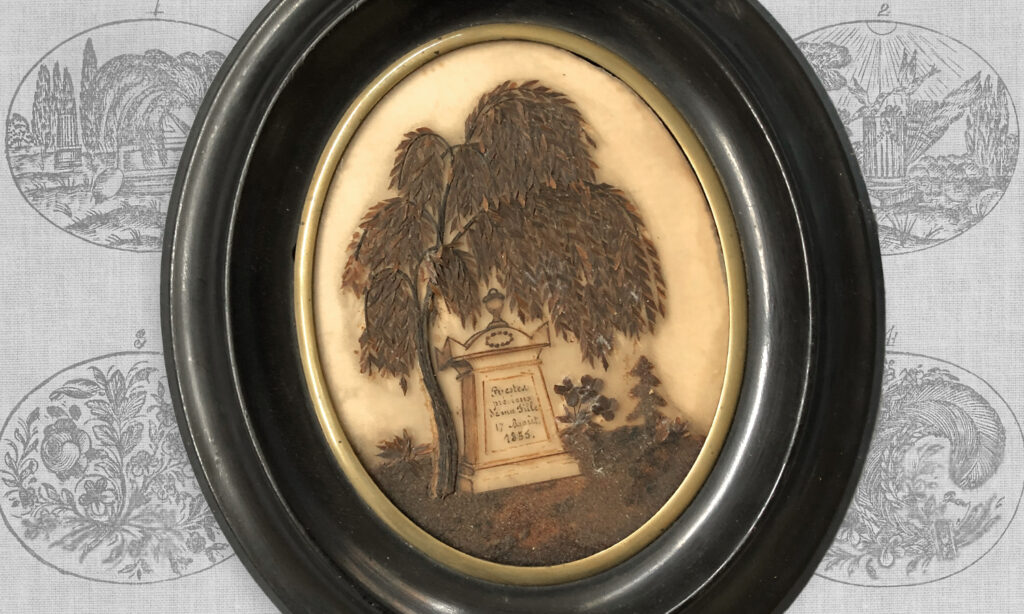A History of Hair Weaving, Part 7

Hairwork in France was another industry that could rival the English or American in the mid 19th century. Evans notes that “jewellery enclosing hair-work remained very popular in France until c. 1850”, while previously from 1778 there was a vogue for wearing hair jewellery for its sentiment, rather than for memorial purposes.
French hairwork, and the jewels that encompass the hair, tend to be of a higher quality and more delicate than their English counterparts. Mourning culture, while popular, did not reach the heights of popularity that it did in England and the expense and quality of the jewels were farther removed from the poorer classes. Hairwork weaving is as grand in its construction, as with middle European hairwork, with a higher propensity for matching necklace / bracelet / earring sets.
In 1858, fashion magazine La Belle Assemblè referred to the French hairwork artist Limmonièr in a revolutionary light. La Belle Assemblè expands on the association with hairwork as a sentimental device and identifies it as a jewellery construction material in its own right, not simply “in which some beloved tress or precious curl is entwined”.






